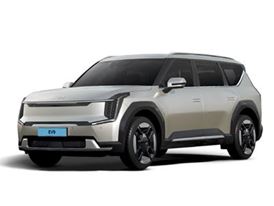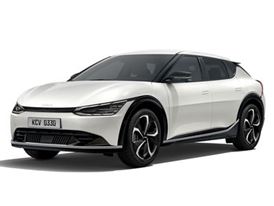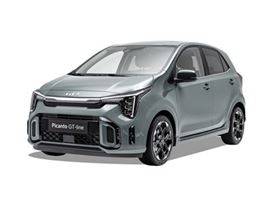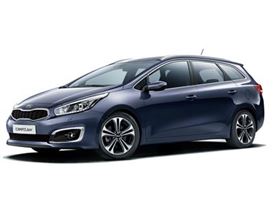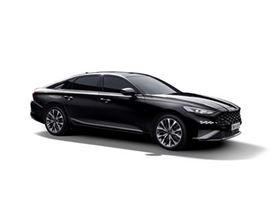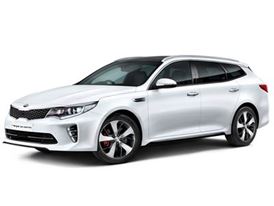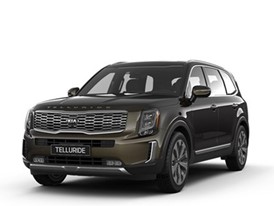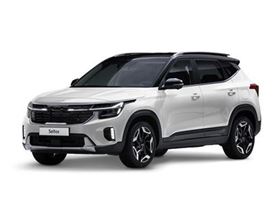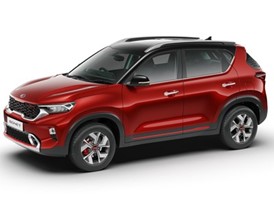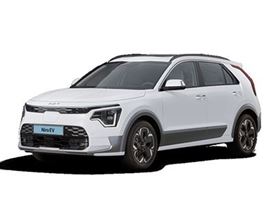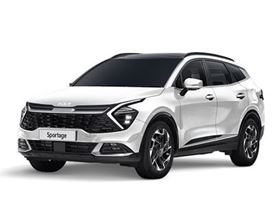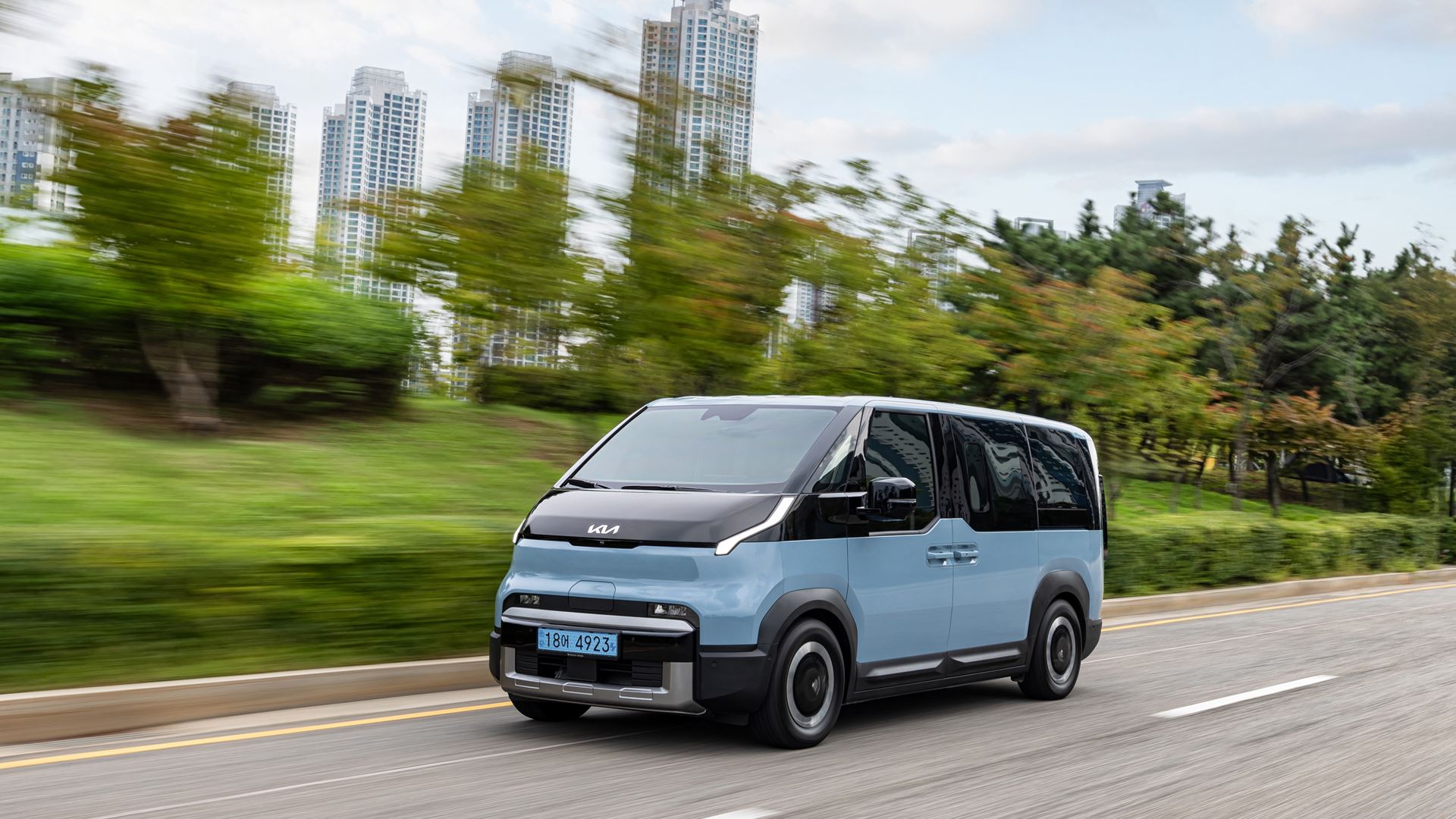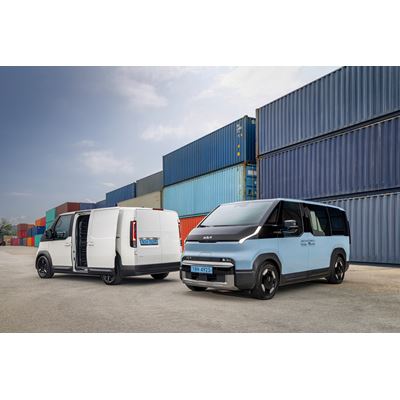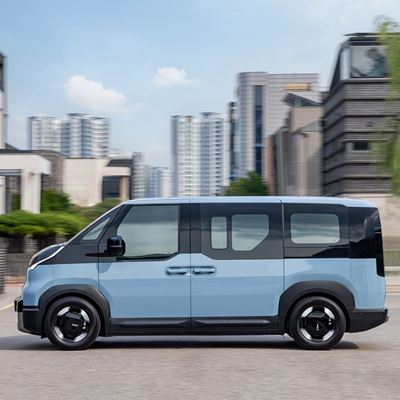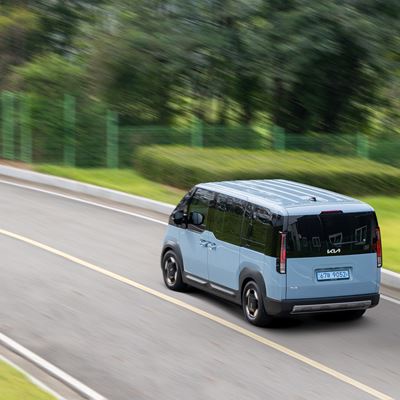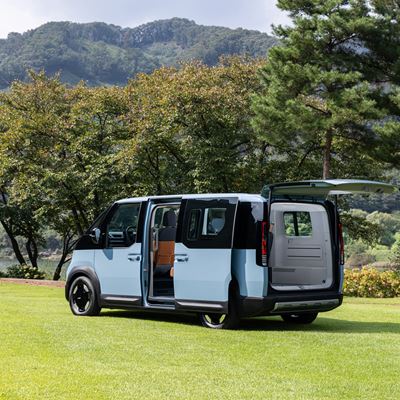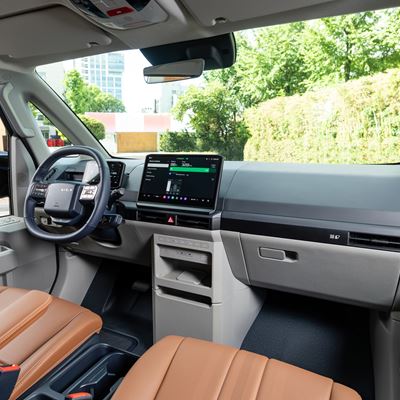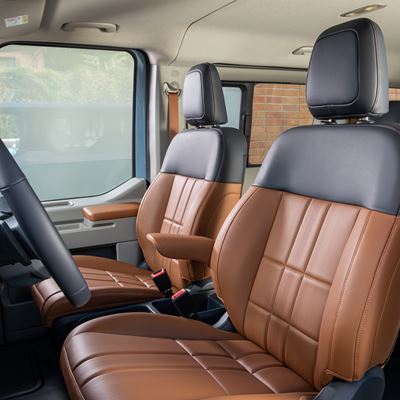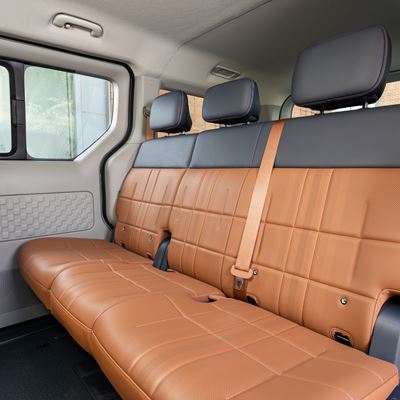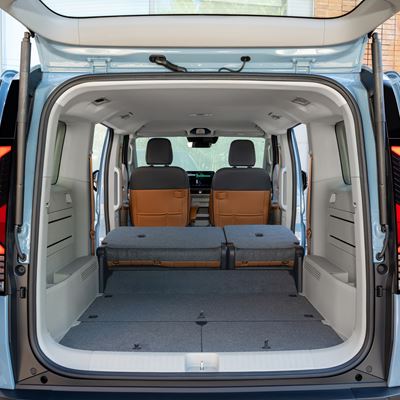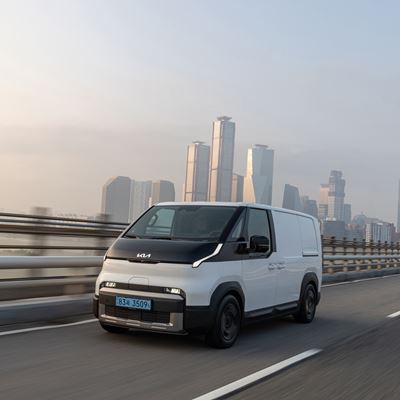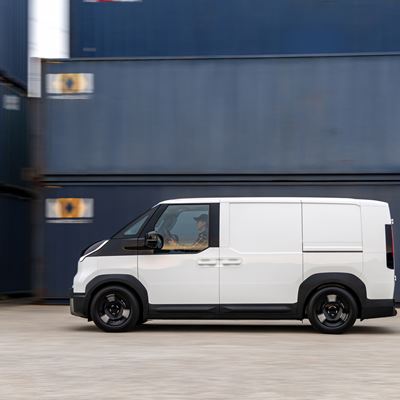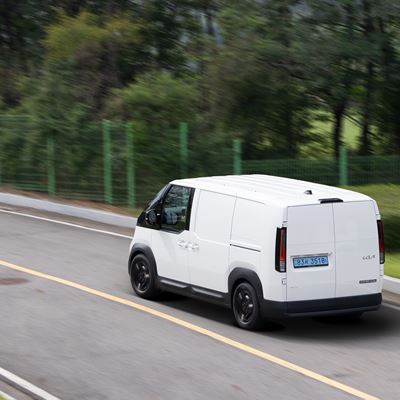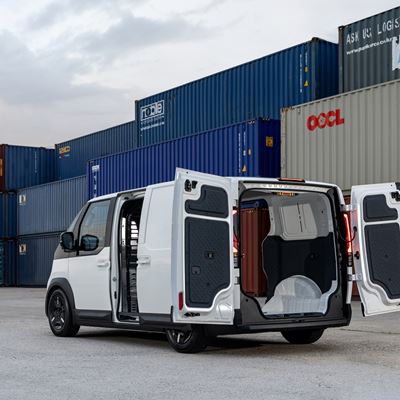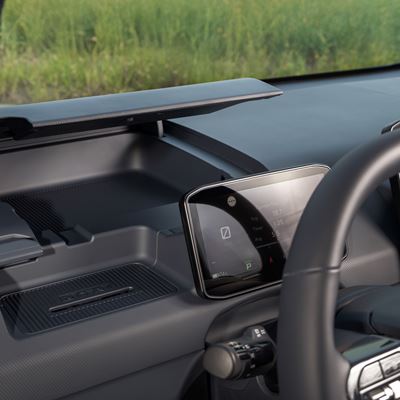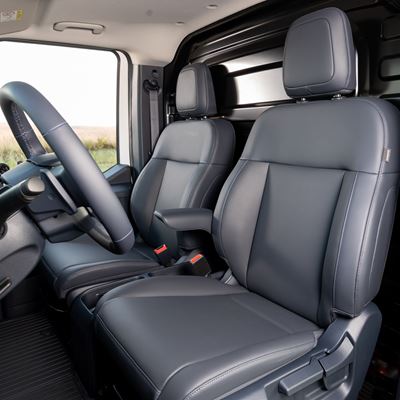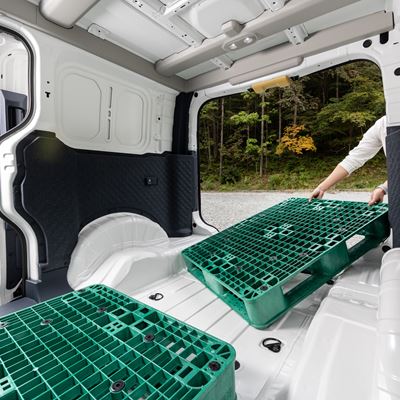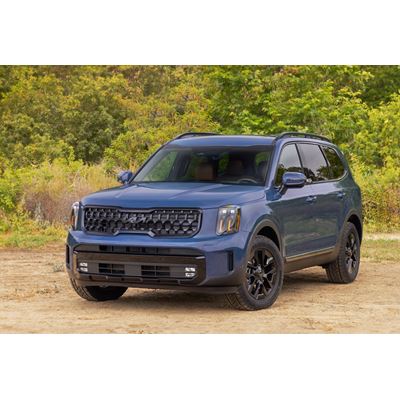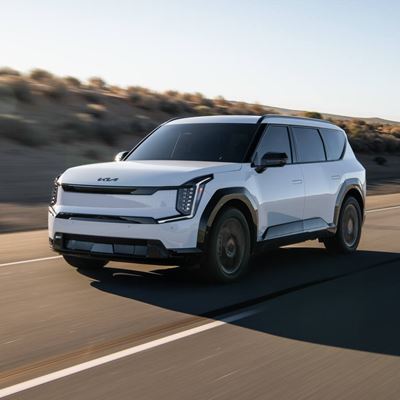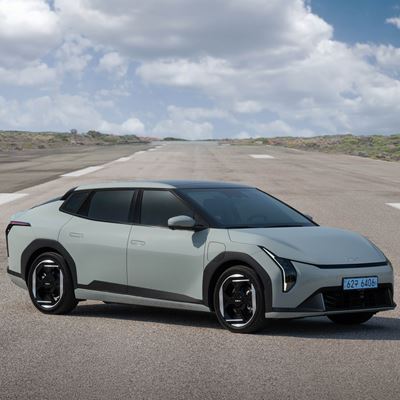Kia PV5 Redefines Mobility Through Customer-Centric Modular Design
- Built to meet customers’ evolving needs, PV5 is first dedicated model in Kia’s Platform Beyond Vehicle (PBV) business strategy
- Embodies Kia’s commitment to developing sustainable business and personal mobility solutions
- Kia targets 250,000 PBV sales by 2030, with the PV5 set to be followed by the PV7 in 2027, and the PV9 in 2029
- Flexible Body System allows up to 16 variants, supporting a wide range of Passenger, Cargo and High-Roof configurations
- PV5 Passenger model offers lowest floor in class to enable children and passengers with limited mobility to enter and exit easily
- Connected software ecosystem empowers fleet operators with real-time management and monitoring, enhancing operational efficiency
- Range of up to 416km and 30-minute fast-charging capability ensure practical performance for business and personal use
- With compact dimensions and agile handling, the PV5 is suited to urban driving
Kia Corporation is advancing its vision for sustainable, customer-centric mobility with the roll-out of the Kia PV5. Launching first in Korea and rolling out to Europe in the coming months, the PV5 will expand to additional global markets in 2026. As Kia’s first dedicated Platform Beyond Vehicle (PBV), the PV5 sets a bold new benchmark for both business and personal mobility.
Built on Kia’s next-generation all-electric ‘E-GMP.S’ PBV platform, the PV5 combines modular design, conversion-ready versatility and advanced software connectivity. Available in Passenger, Cargo and Chassis Cab body styles, it delivers scalable, practical solutions for businesses and individuals.
“The Kia PV5 is an industry-transforming modular, flexible and conversion-ready solution that adapts to the needs of modern businesses and modern lifestyles,” said Sangdae Kim, Executive Vice President and Head of PBV Business Division at Kia Corporation. “With the PV5, we are delivering a new benchmark in PBV technology that combines practicality, efficiency and future-ready innovation, supporting Kia’s vision to lead the global shift towards sustainable, customer-centric mobility solutions.”
How did Kia develop the PV5 for optimum practicality and suitability for customers?
The Kia PV5 was developed through a PBV–exclusive process, which actively incorporated extensive, in-depth customer feedback from businesses worldwide. Kia collaborated closely with professional partners, including leading mobility provider Uber, to ensure that the PV5’s hardware, software and conversion ecosystem meet real-world requirements.
As part of this initiative, Kia hosted ‘PBV Partners Day’ in 2022 and 2023, engaging more than 120 customers from Korea, Europe, North America, the Middle East and Japan. Partner feedback directly shaped key features such as:
- A removeable front passenger seat to maximize cargo space
- Stain-resistant interior materials designed to withstand everything from coffee spills to muddy work boots
- A walk-through configuration on High-Roof variants, enabling seamless movement between the cabin and cargo area
To further enhance real-world usability — and to demonstrate the full potential of Kia’s genuine accessories, including the Kia AddGear and Kia Collection — Kia collaborated with leading partners in its home market, including:
- DHL Korea
- GeoYoung (healthcare provider)
- Korea Post
- Kakao Mobility
- Milwaukee (power tool manufacturer)
These collaborations have resulted in practical innovations that enable users to easily install smartphone mounts, payment terminals, and other business tools within the cabin. The PV5 also features multiple roof mounting points and L-Track interfaces, offering flexible solutions for a wide range of professional applications.
What are some of the real-world applications that the Kia PV5 can be used for?
The PV5 is designed to adapt to a wide range of real-world scenarios, including:
- Airport taxi services
- Premium passenger transport
- Camping and outdoor leisure
- Mobile office setups
- On-site service support
- Mobile production hub (e.g. for film crews or content creators)
The PV5 Passenger model is designed to pivot easily between business and personal needs. During the workweek, it can serve as a professional transport solution — shuttling clients to airports, conference centers or hotels. On weekends, it transforms into a lifestyle vehicle, perfect for taking family and friends on camping trips to the mountains or coast.
To support customers in remote or off-grid environments, the PV5 features both indoor and outdoor Vehicle-to-Load (V2L) capability, supplying up to 3.68 kW of electricity[1]. This makes it the ideal solution for office work, camping, film projects, worksites, or any outdoor setting where additional power is required.
How does the Kia PV5’s design transcend traditional logistics vehicles?
Inspired by Kia’s award-winning ‘Opposites United’ design philosophy, the PV5 reimagines the conventional logistics vehicle with a bold, modern aesthetic. Its sleek upper body contrasts with a robust, technical lower section, while signature lighting flows seamlessly into the A-pillars to create a distinctive profile. Geometric black cladding and modular bumper elements further emphasize durability and adaptability.
But the design goes beyond aesthetics — it also enhances safety and practicality. A low scuttle and beltline provide excellent forward and side visibility, making the PV5 exceptionally well-suited to demanding urban environments.
Inside, all three variants feature a driver zone optimized for operational efficiency. The geometric layout maximizes usable space, while thoughtfully placed storage compartments — at the top and bottom of the dashboard — combine with clean vertical and horizontal graphics to create a minimalist, driver focused environment.
How does the Kia PV5’s design enhance durability, repairability and safety?
- LED headlamps integrated into the front bumper reduce damage risk
- Front and rear bumpers are divided into three sections for easy replacement
- Black wheel arch cladding and rocker panels are durable and easy to replace
- Wide front windscreen, expansive quarter glass, and low beltline improve front and side visibility
What platform is the Kia PV5 built on?
The PV5 is built on Hyundai Motor Group’s first dedicated PBV platform, the Electric-Global Modular Platform for Service (E-GMP.S). This next-generation platform features an Integrated Modular Architecture (IMA) that standardizes complex systems, including batteries, motors, suspension, and underbody structures, reducing development time and enhancing vehicle versatility.
Key Power Electric (PE) components are housed in a dedicated PE compartment and paired with a low-floor design and optimized suspension layout to maximize space and usability. Safety is ensured through a multi-skeletal crash structure and the use of ultra-high-tensile steel, while reinforced subframes and dual sectioned roll-forming side members protect the battery pack from physical impacts.
What are the PV5’s battery options, performance, range, and charging data?
The PV5 is engineered to deliver optimal performance and practicality for a wide range of customer needs, with tailored battery configurations for both Passenger and Cargo models.
Passenger model:
- Battery options: 51.5 kWh or 71.2 kWh Nickel Cobalt Manganese (NCM) battery
- Motor output: up to 120 kW with 250 Nm of torque
- Range: up to 412 km (WLTP, 5-seater model with 71.2 kWh battery)
- Fast charging capability: all battery types charge 10 – 80% within 30 minutes
Cargo model:
- Battery options: 43.3 kWh Lithium Iron Phosphate (LFP) battery, 51.5 kWh or 71.2 kWh Nickel Cobalt Manganese (NCM) battery
- Motor output: up to 120 kW with 250 Nm of torque
- Range: up to 416 km (WLTP, Long model with 71.2 kWh battery)
- Fast charging capability: all battery types charge 10 – 80% within 30 minutes
What advantages does Kia’s PBV Flexible Body System offer?
The PV5 introduces Kia’s Flexible Body System, a modular building-block design that enables diverse vehicle configurations and supports the rapid development of up to 16 variants from a limited number of assemblies. Front cabin modules are standardized, while rear-end, roof, and quarter glass components can be flexibly combined during production to create dedicated Cargo, Passenger, or High-Roof models.
The PV5 Passenger variant features the lowest floor in its class, enhancing accessibility for children and passengers. Sidestep height at the sliding doors is just 399 mm, and with the second-row seats folded, the five-seater model offers up to 3,615L of luggage volume (starting from behind the 1st row, with height up to headlining) — providing versatility for both daily use and weekend outdoor activities
The PV5 Cargo variant, meanwhile, is engineered for commercial efficiency. A low-floor design, combined with a rear step height of just 419 mm, simplifies loading and unloading. Cargo volume ranges from 4.0 m³ in the Standard (L1H1) model to 5.2 m³ in the High Roof (L2H2) model — large enough to accommodate two Euro pallets. This generous capacity makes the PV5 highly competitive with traditional car-derived vans while maximizing usability for business customers.
What connected technology solutions does the Kia PV5 offer?
The PV5 features a large display, uncommon in other light commercial vehicles (LCVs), including a 7.5-inch instrument cluster and a 12.9-inch navigation screen, as well as Digital Key 2.0 technology (NFC, BLE, and UWB) for enhanced vehicle access.
A PBV-specific infotainment system, based on Android Automotive OS, provides:
- Fleet management capabilities
- Third-party app integration via the Pleos App Market
- Dedicated control of vehicle body functions for conversion models.
What are the driving characteristics of the PV5?
While traditional commercial vehicles often place limited emphasis on driving dynamics, Kia’s designers and engineers took a different approach with the PV5 — developing it from the ground up to offer a refined and responsive driving experience.
Despite its tall stance, the PV5’s battery is positioned deep within the floor, lowering the center of gravity and improving weight distribution. This contributes to enhanced agility and stability when compared to traditional commercial vehicles.
Moreover, the PV5 Passenger model features suspension that has been specifically tuned to ensure occupants can enjoy a relaxed, comfortable and quiet travel experience.
What advanced technologies enhance the PV5 driving experience?
The PV5 features Smart Regenerative Braking, which automatically adjusts deceleration based on traffic flow, navigation data, and driver braking patterns — helping to reduce driver workload. By pulling the right paddle shifter, drivers can activate the system, which intelligently regulates speed and maintains a safe distance from the vehicle ahead by varying the strength of the regenerative braking.
The PV5 is equipped with a full suite of advanced driver assistance systems (ADAS), including, but not limited to:
- Highway Driving Assist
- Smart Cruise Control
- High Beam Assist
- Blind-spot Collision-Avoidance Assist
- Parking Collision-Avoidance Assist
How has Kia ensured that the PV5 provides accessible mobility for everyone?
Kia has developed a Wheelchair Accessible Vehicle (WAV) variant of the PV5, designed to offer greater freedom and independence for individuals facing mobility challenges. It features a gently sloped side-entry ramp, universal securing systems, and a spacious low-floor layout to ensure easy access and comfortable travel.
The PV5 WAV is designed not only for wheelchair users, but also with the needs of families, caregivers, and drivers in mind — supporting inclusive, convenient mobility while enabling a seamless transition to electric transportation.
This variant demonstrates Kia’s commitment to inclusivity and versatility across its PBV portfolio, as well as its determination to serve a growing market segment shaped by rising life expectancy and aging populations worldwide.
How will Kia extend its PBV conversion strategy?
From the outset, the PV5 has been designed for seamless conversions. At the heart of this strategy is Kia’s PBV Conversion Center, which offers certified, factory-quality conversions. Donor models are pre-prepared with non-essential components — such as seats and trim —removed, enabling certified conversion partners to easily integrate professional equipment.
To further support our global conversion partners, Kia provides access to a dedicated Conversion Portal System. This platform offers technical resources including 3D CAD Data, a Bodybuilder Manual, and homologation information, along with a Technical Hotline to ensure safe and consistent conversions worldwide[2].
When will the Kia PV5 reach customers?
Mass production of the PV5 Passenger and Cargo (Long) models is already underway at Kia’s Hwaseong EVO Plant in Korea, with additional variants scheduled to roll out sequentially.
What are the goals of Kia’s PBV business strategy?
- Launch PV7 in 2027
- Launch PV9 in 2029
- Sell 250,000 PBVs globally by 2030
- Establish a scalable, software-driven mobility ecosystem
Kia PV5 Specification
The Kia PV5 | |||||
Variant | Passenger (2-3-0) | Cargo (Long) | |||
Length | 4,695 mm | 4,695 mm | |||
Width[3] (b/w door handles) | 1,895 mm | ||||
Height[4] | 1,923 mm with antenna / 1,899 mm without antenna | ||||
Wheelbase | 2,995 mm | 2,995 mm | |||
Battery | 71.2 kWh | 51.5 kWh | 43.3 kWh | 51.5 kWh | 71.2 kWh |
Max Power output | 120 kW / 250 Nm | 120 kW / 250 Nm | |||
Fast Charging (10-80%) | Within 30 mins | ||||
Max All electric range (km, WLTP) | 412 km | 416 km | |||
※ Specifications shown are based on the European model and Kia’s international measurement standard.
※ Specifications may vary depending on the market of release.
[1] Based on the European model. Specifications may vary depending on the market of release.
[2] Access to the Conversion Portal is limited to approved conversion partners.
[3] The wheel arch length for both Passenger and Cargo is 1,850 mm.
[4] Non-European specs are 1,930 mm with antenna / 1,905 mm without antenna
